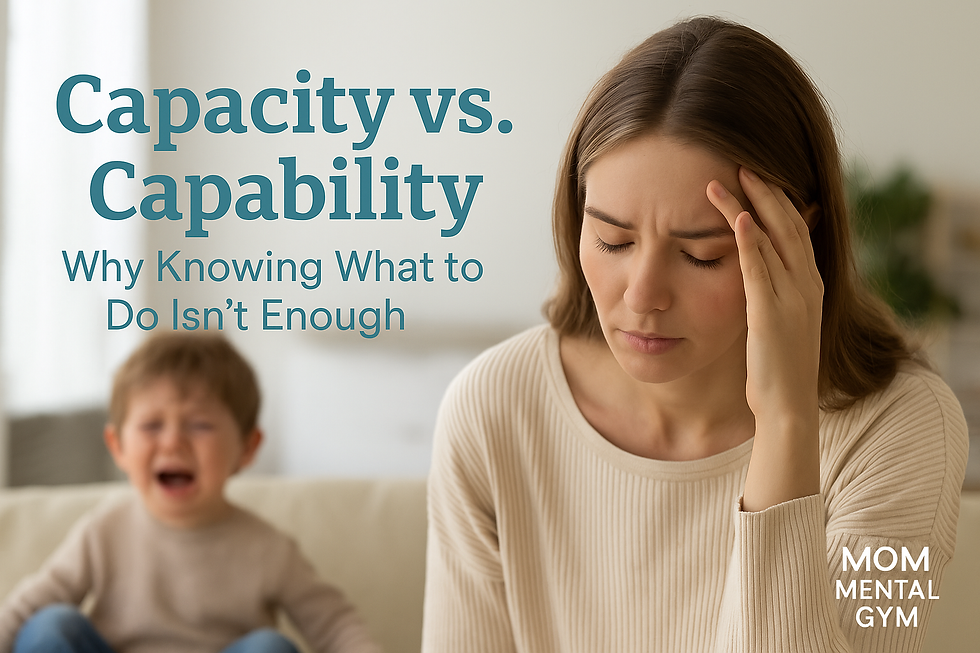Turning Meltdowns into Moments of Connection with Co-Regulation
- Aug 31, 2024
- 3 min read
What is Co-Regulation?
Co-regulation is the process through which a parent or caregiver helps a child manage and regulate their emotions by providing calm, supportive presence. Think of it as being a safe harbor during a storm. When your child is overwhelmed by strong emotions, your calm and steady response can help them find their way back to emotional balance.
In essence, co-regulation involves sharing your calm with your child, helping them to feel safe and understood, and turning meltdowns into moments of connection while guiding them toward self-regulation over time.

Why is Co-Regulation So Important?
Children and teens are still learning how to manage their emotions, and during times of stress or upset, their nervous systems can become dysregulated. When this happens, they might experience intense emotions like fear, anger, or sadness and may not have the tools to return to a calm state.
As a parent or caregiver, your role is crucial in these moments. Your calm presence can help soothe their nervous system, reduce the intensity of their emotions, and model healthy ways of handling stress. Over time, as they experience co-regulation, they learn to internalize these calming strategies and begin to regulate their emotions independently.
How Co-Regulation Helps Children and Teens
Co-regulation is like a bridge that helps children and teens cross from a state of emotional chaos to one of calm and clarity. Here’s how it works:
Emotional Safety: When you respond to your child’s distress with calmness and empathy, you create an environment of emotional safety. This tells your child that it’s okay to feel what they’re feeling and that you’re there to help them through it.
Modeling Calm Behavior: Your calm response serves as a model for handling intense emotions. Children learn by observing, and when they see you staying composed, they start to understand that they can handle their emotions in a similar way.
Physical Soothing: Co-regulation often involves physical comforting, like holding your child, rubbing their back, or even just sitting close to them. These physical gestures help activate their parasympathetic nervous system, which is responsible for calming the body down.
Empathy and Understanding: By acknowledging your child’s feelings and showing empathy, you help them feel understood and less alone in their experience. This can reduce the intensity of their emotions and help them feel more grounded.

Real-Life Example: Co-Regulation in Action
Imagine your child is having a meltdown because they’ve had a tough day at school. They’re crying, yelling, and maybe even saying things they don’t mean. Instead of reacting with frustration, you take a deep breath and approach them calmly.
You might say, “I can see you’re really upset right now. I’m here with you.” Then, you sit with them, maybe offering a hug or just being physically close. As they start to calm down, you continue to speak softly and reassuringly, “It’s okay to feel sad. I’m right here.”
Over time, your child begins to settle. They might start to talk about what’s bothering them, or they might just sit quietly with you until they feel better. In this moment, you’ve helped them move from a state of dysregulation to one of calm, simply by sharing your calm presence.

The Long-Term Benefits of Co-Regulation
By consistently practicing co-regulation, you’re helping your child develop the skills they need to manage their emotions independently. As they grow, they’ll start to internalize the calming strategies you’ve modeled, and they’ll be better equipped to handle stress and challenges on their own.
Improved Emotional Regulation: Children who experience co-regulation learn to recognize their emotions and understand that they can be managed, not feared.
Stronger Parent-Child Bond: Co-regulation strengthens the emotional bond between you and your child. They learn that they can rely on you for support, which builds trust and security in your relationship.
Resilience: Over time, children who are co-regulated develop greater resilience. They learn that even in difficult moments, they have the ability to return to a state of calm and move forward.
Final Thoughts
Co-regulation is a powerful tool in helping children and teens manage their emotions. By providing a calm, supportive presence, you’re not only helping them navigate their current emotions but also equipping them with the skills they need for emotional regulation in the future. In those challenging moments, remember that your calm is the anchor they need to weather the storm.



Comments